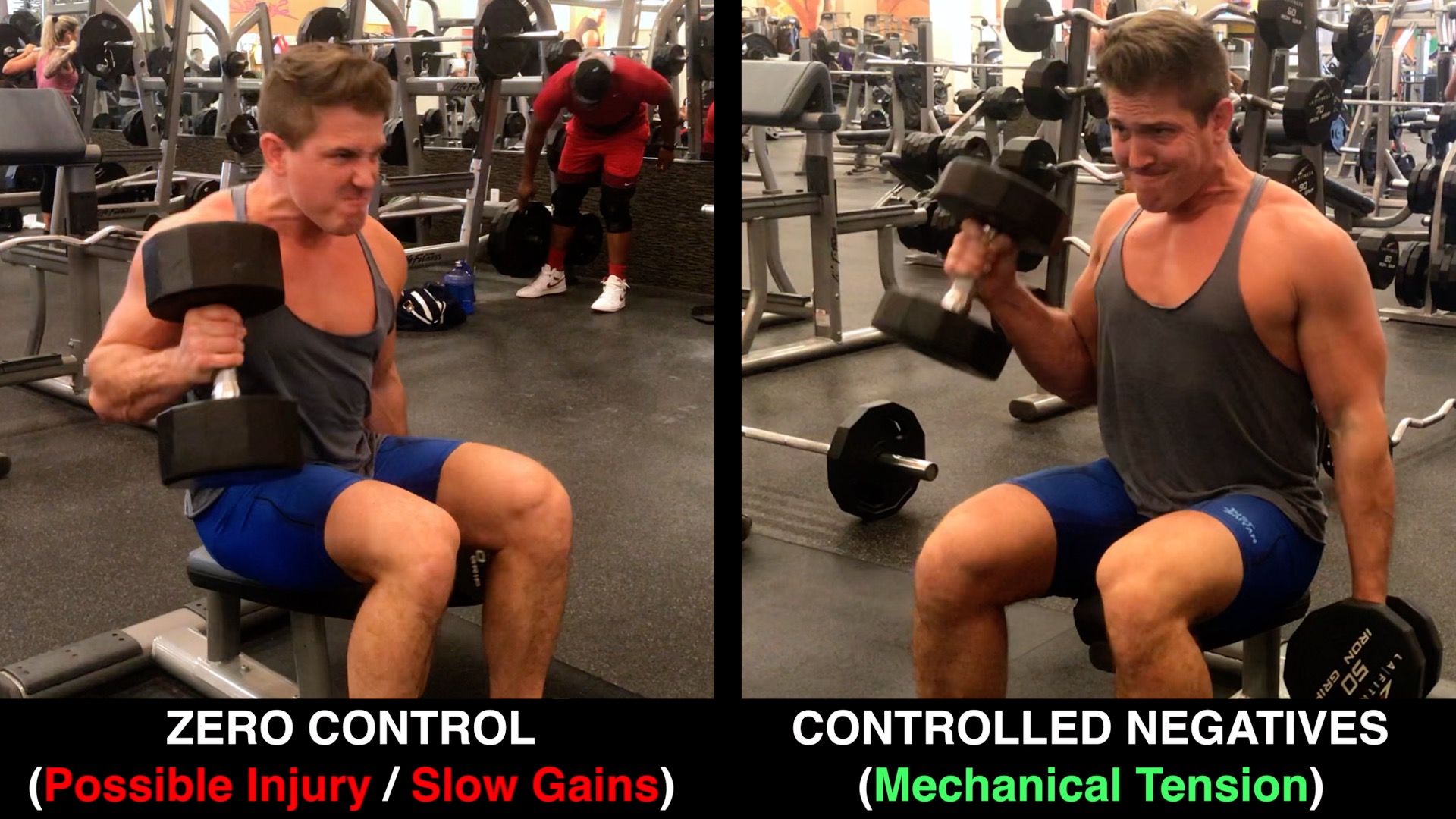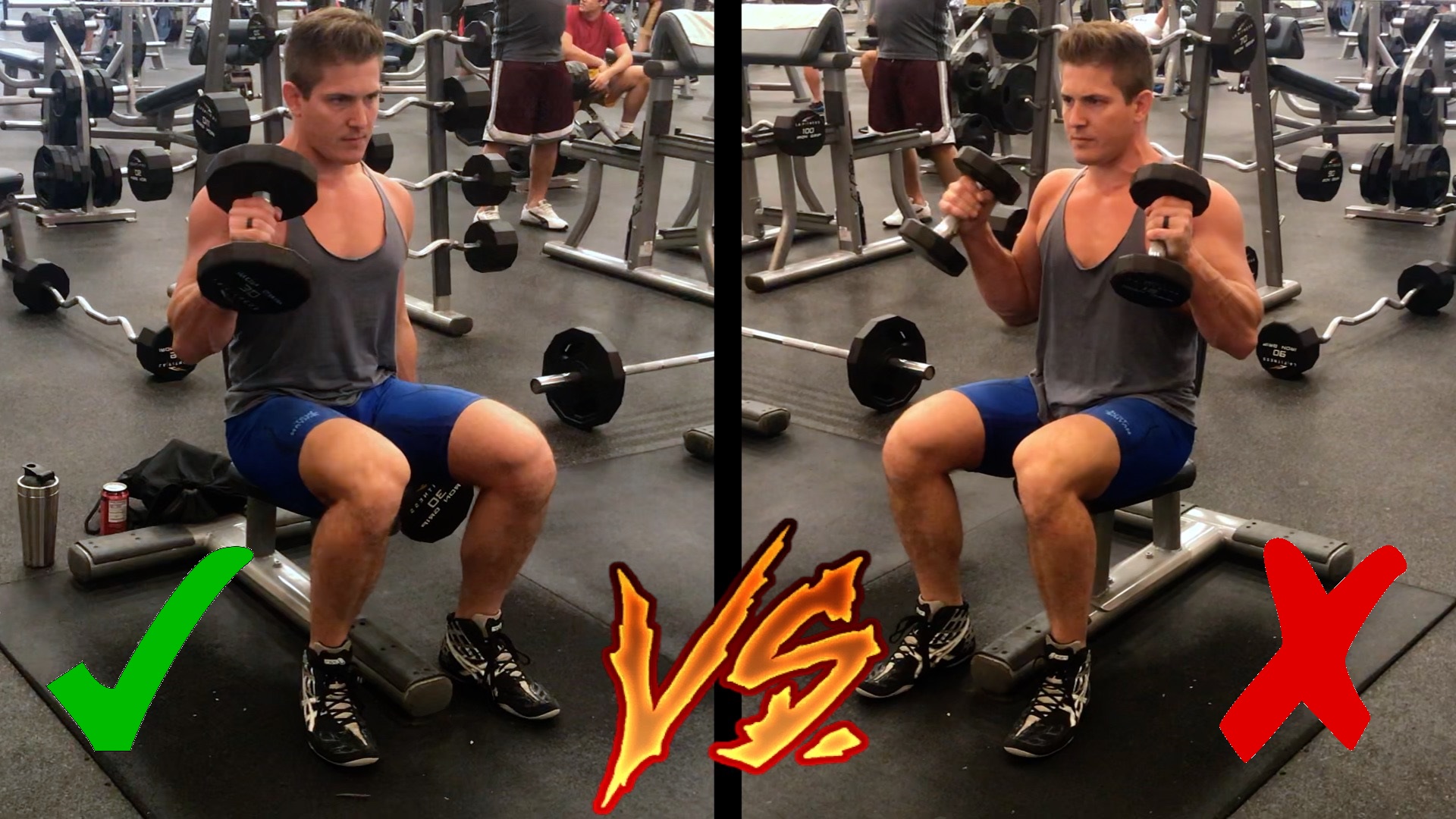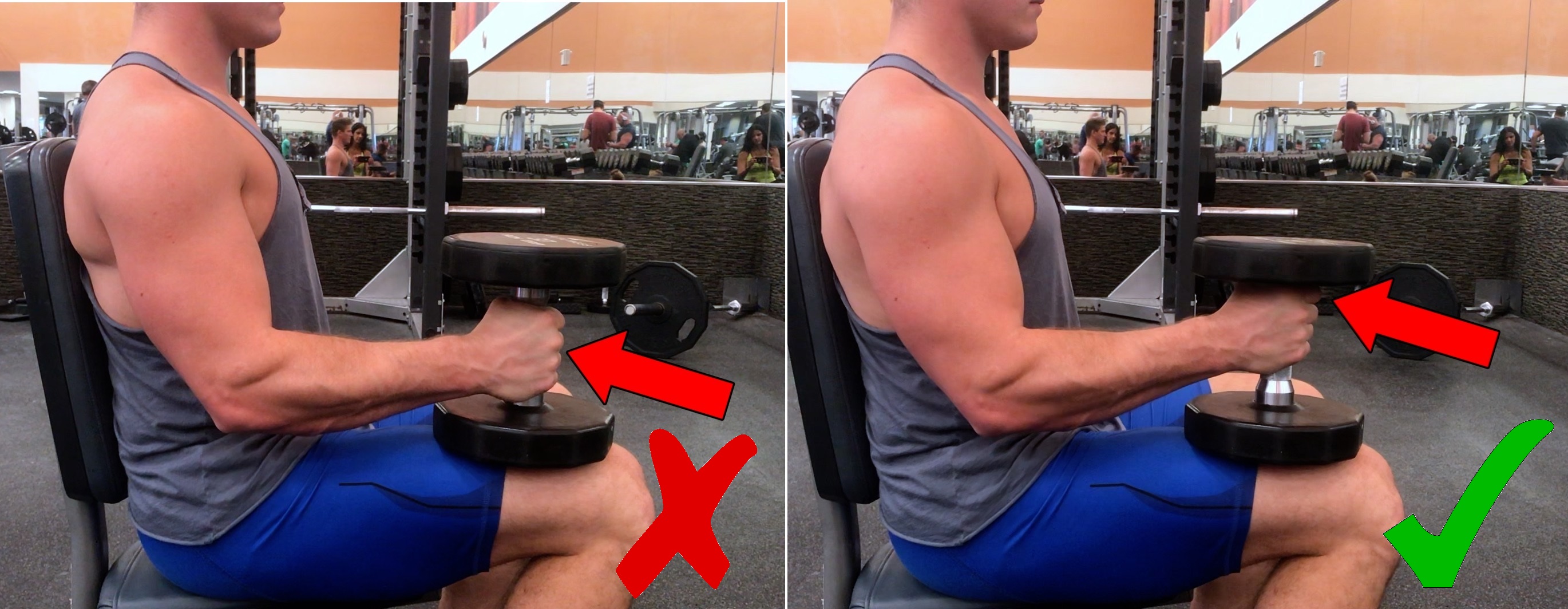5 Dumbest Hammer Curl Mistakes Sabotaging Your Arm Growth!
Stop Doing These!
It’s time for another installment in the dumbest mistake series! If you haven’t seen the other videos in this series, you can check out the full playlist HERE. Today, we’re talking hammer curls! If I could just pick one biceps exercise most people not only have bad form with, but use incorrectly in correlation to building big biceps, it would be this one.
Mistake #1: Treating The Hammer Curl As A Bicep Curl
This is probably the most common mistake. Obviously you’re flexing the elbow joint which means the biceps are involved, but the hammer curl mainly targets the brachialis and the brachioradialis. But don’t think you’re wasting your time! Developing these two muscles is very important to having thick and muscle-bound arms. In fact, if the brachialis is developed properly, it can have an effect where it makes your biceps look even bigger because that muscle sits right in the middle of your upper arm. Now that you know this, just make sure when you’re training your arms that you don’t replace a biceps focused movement with hammer curls – you want to do both!
Biceps Curl:

Hammer Curl:

Mistake #2: Not Earning Your Reps
This includes both full range of motion and controlled negatives. I see dudes all the time in the gym swinging 70lb or 80lb dumbbells with no control whatsoever. Zero mind-muscle connection will result in your inability to flex, squeeze, rip and tear your muscle for growth… period!
Proper form includes a fully flexed tricep at the bottom of the movement, keeping your elbows in front of your hips as you curl up, and then flexing your biceps as hard as you can at the very top of the movement. Remember, you’re not strength training here, you’re building muscle. So yes you do need to overload, but overloading with weight you can’t control is a recipe for little to zero muscle growth and a possible injury. What you want to do is utilize mind-muscle connection and really work the muscle you’re targeting. So to do that, you have to come up and really flex your arm to force as much blood into the area as possible and then control the negative. Every rep counts and every rep should be aimed towards maximum muscle breakdown.


Mistake #3: Curling Both Arms At The Same Time!
Let’s open up a can of worms with this mistake! This is actually debated quite a bit because some people will try to have you believe that if you curl one arm at a time your other arm is resting, thus gains are lost. Well, let’s put this myth to bed with a little something I like to call common sense. Really, resting? You still have to grip the dumbbells tight and keep the triceps flexed for full extension at the bottom of the movement! Not mention, this is where the STRETCH is for the muscles you’re trying to train.
So if you think the fraction of a second between alternating arms is enough to interfere with the intensity of your reps, then there’s only one conclusion I can come to and that is that you are hammer curling with baby weights. Seriously, grab a pair of the heaviest dumbbells you can handle, and start cranking out some reps. If there was ‘too much rest’ due to alternating your arms, then in theory you should be able to crush 30 – 40 reps easy with 50lbs – 60lbs.

Now, if you curl both arms at the same time, yes it takes more core control, and yes you will fail a bit quicker with heavier weights. However, if the goal is muscle gain, you want to be able to lift as much as possible and you will be able to lift significantly more weight with more control performing this movement one arm at a time. But, if you're circuit-style training for fat loss, sure, double hammer curl all day long! But if your goal is muscle gain where overloading and heavy negatives play a crucial role in growth, then don’t tell me that alternating single-arm curls are not the best choice.
Mistake #4: Gripping The Dumbbells In The Middle Of The Handle
As I mentioned earlier, the hammer curl is an isolation movement that’s meant to target the brachialis and brachioradialis. But if you want to maximize the hammer curl and use as much weight as possible, don’t grip it in the middle. At this point, you’ll be wasting too much energy on grip strength when you should be focusing on curling the weight up. Instead, grab the dumbbell handle as high as you can that way the dumbbell itself can rest on your hand. This will allow you to use heavier weights and you will still benefit from holding the dumbbell to increase your grip strength and train your forearms.

Mistake #5: Performing The Movement Standing!
This might not seem like a mistake to most of you, but it goes hand-in-hand with mistake number three. If the goal when building muscle is overloading, then you definitely want to curl one arm at a time. You can take it one step further so that the exercise doesn’t require as much core control for stability by sitting and you’ll be able to add another 5lbs – 10lbs to your reps. If you really want to take advantage of this exercise, you should be performing this movement seated.

To be clear, YES, I’m basically saying that performing the hammer curl standing is “harder”, but not harder for the biceps. It’s harder on your core. Again, if you’re circuit training for fat loss, do them standing and both arms at the same time. But for muscle gain, to get the most out of this exercise, you should be seated and alternating your reps.
Conclusion
If you want to incorporate this into your next biceps routine, I would recommend you first perform 6 – 8 sets of a standard biceps curl, like a barbell curl or an incline dumbbell curl (8 – 10 reps per set), and then finish the workout with 6 – 8 sets of the alternating dumbbell hammer curl (8 – 10 reps per set).








